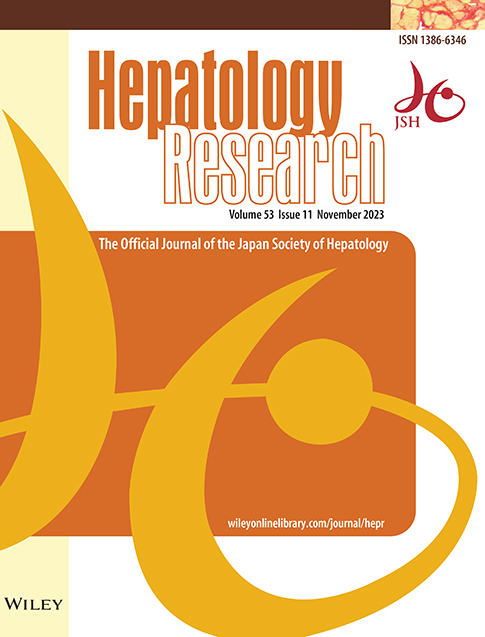Rare sequence variants associated with the risk of non-syndromic biliary atresia
This study met ethics and integrity policies of Hepatology Research.
Abstract
Aim
The etiology of non-syndromic biliary atresia (BA) remains largely unknown. In this study, we performed genome-wide screening of genes associated with the risk of non-syndromic BA.
Methods
We analyzed exome data of 15 Japanese patients with non-syndromic BA and 509 control individuals using an optimal sequence kernel association test (SKAT-O), a gene-based association study optimized for small-number subjects. Furthermore, we examined the frequencies of known BA-related single-nucleotide polymorphisms in the BA and control groups.
Results
SKAT-O showed that rare damaging variants of MFHAS1, a ubiquitously expressed gene encoding a Toll-like receptor-associated protein, were more common in the BA group than in the control group (Bonferroni corrected p-value = 0.0097). Specifically, p.Val106Gly and p.Arg556Cys significantly accumulated in the patient group. These variants resided within functionally important domains. SKAT-O excluded the presence of other genes significantly associated with the disease risk. Of 60 known BA-associated single-nucleotide polymorphisms, only eight were identified in the BA group. In particular, p.Ile3421Met of MYO15A and p.Ala421Thr of THOC2 were more common in the BA group than in the control group. However, the significance of these two variants is questionable, because MYO15A has been linked to deafness, but not to BA, and the p.Ala421Thr of THOC2 represents a relatively common single-nucleotide polymorphism in Asia.
Conclusions
The results of this study indicate that rare damaging variants in MFHAS1 may constitute a risk factor for non-syndromic BA, whereas the contribution of other monogenic variants to the disease predisposition is limited.
Graphical Abstract
We conducted an optimal sequence kernel association test using exome data of 15 Japanese patients with non-syndromic type III biliary atresia and 509 control individuals. The results indicate that rare damaging variants in MFHAS1 may constitute a risk factor for non-syndromic biliary atresia; however, the overall contribution of monogenic variants to the disease predisposition is small.
CONFLICT OF INTEREST STATEMENT
Authors declare no Conflict of Interests for this article.
Open Research
DATA AVAILABILITY STATEMENT
The data that support the findings of this study are available from the corresponding author on request.





